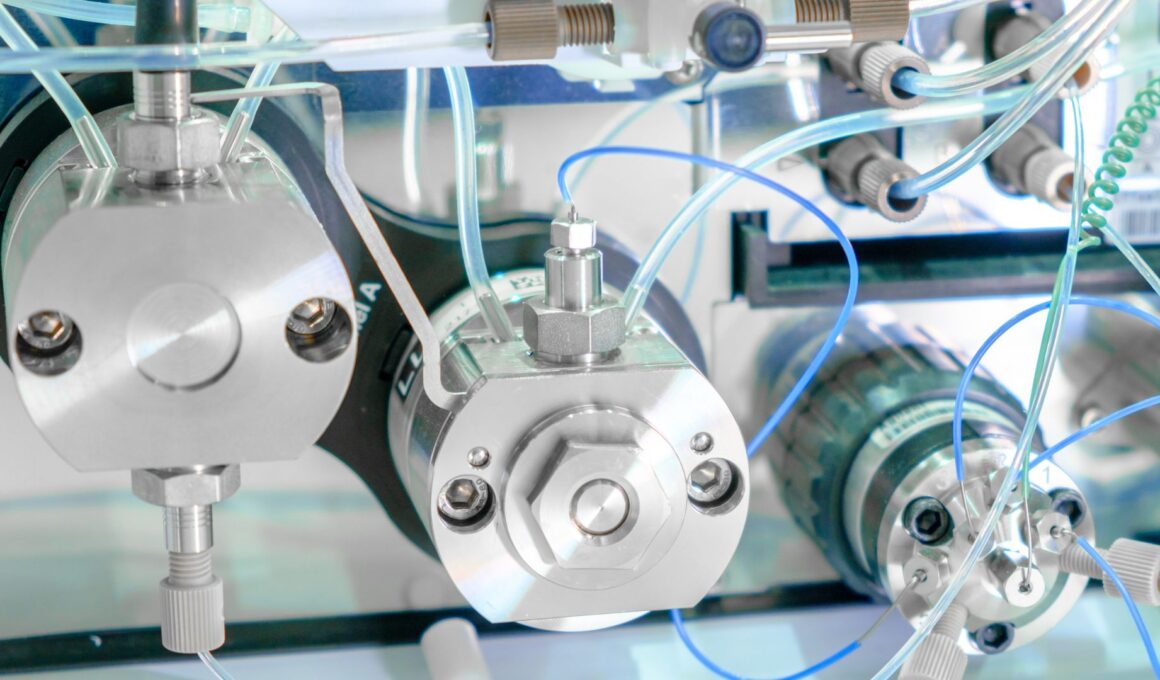The pharmaceutical industry relies heavily on advanced analytical instruments to ensure the safety, efficacy, and quality of drugs and medical products. These instruments play a crucial role in drug development, quality control, and regulatory compliance. In this comprehensive blog, we will explore various types of analytical instruments used in the pharmaceutical sector and delve into their applications in detail.
1. High-Performance Liquid Chromatography (HPLC):
Application: HPLC is a versatile technique used for drug purity testing, separation of compounds in formulations, and quantifying active pharmaceutical ingredients (APIs) and impurities. It plays a critical role in quality control.
2. Gas Chromatography (GC):
Application: GC is employed for analyzing volatile compounds, such as residual solvents, in drug formulations. It is also used for testing the purity of raw materials and APIs.
3. Mass Spectrometry (MS):
Application: MS is indispensable for identifying and quantifying compounds in complex pharmaceutical samples. It aids in structural elucidation, metabolite identification, and impurity profiling.
4. Nuclear Magnetic Resonance Spectroscopy (NMR):
Application: NMR is used for determining the structure of organic compounds, including APIs and intermediates. It provides valuable insights into molecular conformation and purity.
5. UV-Visible Spectroscopy:
Application: UV-Visible spectroscopy is widely used for quantitative analysis of compounds with chromophores. It is valuable for assessing drug concentrations in formulations.
6. Infrared Spectroscopy (IR):
Application: IR spectroscopy helps identify functional groups and provides information on the chemical composition of pharmaceuticals, excipients, and raw materials.
7. X-ray Diffraction (XRD):
Application: XRD is essential for studying the crystalline structure of drugs and solid-state properties. It aids in polymorph characterization and formulation development.
8. Differential Scanning Calorimetry (DSC):
Application: DSC is used to analyze thermal properties, including melting points and heat capacities of pharmaceuticals. It assists in stability testing and formulation optimization.
9. Particle Size Analyzers:
Application: Particle size analyzers measure the size distribution of drug particles, aiding in formulation development, drug delivery system optimization, and quality control.
10. Spectrophotometers:
Application: Spectrophotometers are versatile instruments for analyzing the optical properties of pharmaceuticals. They are used for color analysis, content uniformity, and stability testing.
11. Raman Spectroscopy:
Application: Raman spectroscopy provides non-destructive identification of pharmaceutical materials, including APIs and finished products, facilitating quick quality assessments.
12. Dissolution Testers:
Application: Dissolution testers assess the rate at which drug formulations dissolve. This information is crucial for bioavailability studies and formulation development.
13. Atomic Absorption Spectroscopy (AAS):
Application: AAS quantifies trace metals in pharmaceuticals. It ensures compliance with regulatory limits and assesses the potential for metal impurities.
14. Capillary Electrophoresis (CE):
Application: CE separates ions and molecules in pharmaceutical samples, enabling the analysis of charged compounds, including proteins, peptides, and nucleic acids.
15. Inductively Coupled Plasma Mass Spectrometry (ICP-MS):
Application: ICP-MS is used for trace element analysis, particularly heavy metals, in pharmaceuticals and raw materials, ensuring product safety and quality.
16. Surface Area Analyzers:
Application: Surface area analyzers measure the specific surface area of pharmaceutical powders and excipients. This data informs formulation and manufacturing processes.
17. Microscopy (Optical, Electron, Confocal):
Application: Various microscopy techniques are employed for particle analysis, polymorph identification, and the examination of drug formulations at a microscopic level.
18. Titration Instruments:
Application: Titration instruments are used for precise volumetric analysis in pharmaceutical laboratories. They determine assay, content, and acid-base properties.
19. Thermal Gravimetric Analyzers (TGA):
Application: TGA measures changes in weight as a function of temperature, providing insights into decomposition, stability, and moisture content of pharmaceuticals.
20. Chromatographic Mass Spectrometry (LC-MS and GC-MS):
Application: LC-MS and GC-MS combine chromatography with mass spectrometry, offering exceptional sensitivity for quantitative and qualitative analysis of complex pharmaceutical samples.
The pharmaceutical industry relies on a diverse array of analytical instruments to ensure the safety, efficacy, and quality of drugs and medical products. These instruments enable pharmaceutical scientists and quality control professionals to conduct in-depth analyses, characterize compounds, identify impurities, and meet stringent regulatory requirements. As the industry continues to evolve, advancements in analytical technologies play a pivotal role in drug development and manufacturing, ultimately benefiting patient health and well-being.







